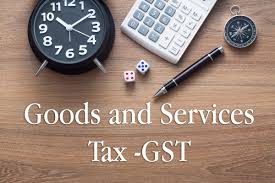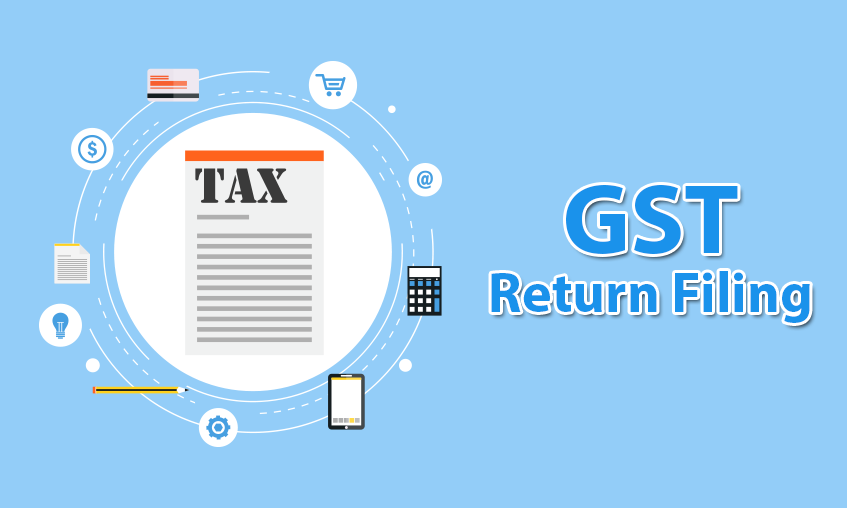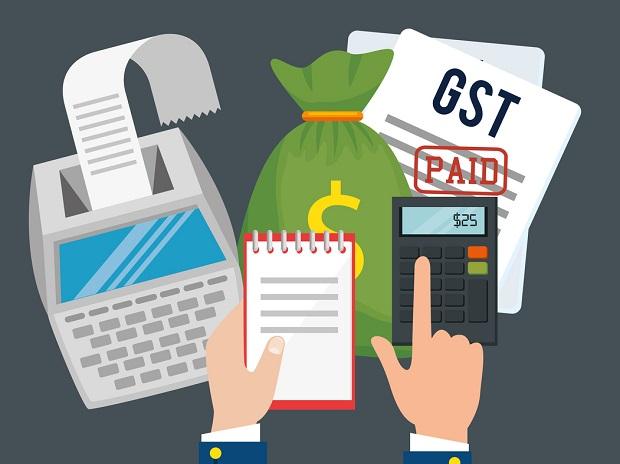
How to apply for GST registration in India?
Probably, we might be heard a lot about the impacts of GST registration on our daily life. This article will assist you in getting the concept behind the tax and will help you to apply for GST.

Chiefly, GST stands for goods and services tax. GST is a form of indirect tax, which is very close to how service tax or VAT are indirect taxes. It aims at uniting the Indian market altogether and will acts as tax for the whole country. GST can be applied on the supply of all goods and services from the product manufacturer to the customer.
It can also provide for the tax credit of all taxes at each and every stage. The end user or the customer obtaining any goods or services will be liable to pay taxes charged by the dealer before him and will be able to obtain set off for all other taxes paid previously. GST is implemented with a moto of regulating the tax structure in India, which is clearly by the tagline “One Tax for One Country”
Apply for GST based on the business type:
- IGST – Stands for Integrated GST, which will be charged and administered by Centre on inter-state supply of goods and services.
- CGST – Stands for Central GST, will be administrated by the Centre on intra-State supply of goods or services
- SGST – Stands for State GST, will be taxed by the States called the State GST.
How GST provides benefits to the country?
Consequently, the benefits of GST will vary to the different set of consumers in different ways. The advantages of GST according to the individual perspective are:
Benefits for businesses
- In general, Businesses and consumers will find it easier to fulfil with the requirements of the taxation system as it will be backed with a complete IT system, such as GST registration, filing returns and payment of taxes through online. Hence, formalities of GST can be carried outin an easy manner.
- Carrying out business operations across different country will become a neutral process. The common tax rate structure will helps people to start and operate a business across any location.
- This system of taxation will reduce hidden costs of doing business. Apply for GST and attain more benefits.
- The tax rate reduction and the uniform taxation will give way to increased competition across industries.
Benefits to the governments
- Moreover, Central and state governments were administering a number of indirect taxes, but there are provisions and rules to be complied. Now, with a uniform tax system across the entire nation, backed with an efficient IT system, the task of administering the taxation system will be simplified.
- Online system of GST taxation and the cost of collecting taxes will reduce significantly. As a result, higher revenue collection from the government.
Benefits to the consumer

- At present, there are many goods and services in the country that are laden with the cost of hidden taxes. With a single taxation structure at each stage, will have a transparency in the pricing of goods.
- The overall tax burden on goods or services will fall down significantly.
Benefits to the SME/MSME’s
- Tax payers with an aggregate turnover in a financial year up to Rs.10 lakhs can be exempt from tax.
- For the NE States and Sikkim, the exemption threshold will be Rs. 5 lakhs.
- Further, SMEs in the service sector enjoys no exemption or concerns. Concessions are only for the SME manufacturers. The total tax rate in every product that we manufacture in India will be between 27 to 31%, which is supposed to come down to a 20%
- The SMEs whose turnover is up to Rs 1.5 crore were availing excise exemption of GST, but they were subjected to VAT/CST/entry tax etc. under the state law. The exemption to SME will not exempt the entire Rs 1.5 crore.
How government helps to manage GST?
Since India has a centralized structure, GST will be governed in two stages, central and state level. GST will be charged on the supply of all goods and services. Cross utilization of input tax credit will not be allowed and the input tax credit of a respective stage will be allowed to be set off from that stage itself. However, cross utilization of central GST across goods and services will be allowed like State administered GST.
How to apply for GST Registration in Tirupur?
In fact,the goods & Services Tax (GST) Council has decided if the annual turnover of a particular business exceed Rs 20 lakhs then he should apply for GST registration. Moreover, Limit is Rs 10 lakhs for the North Eastern States. If it below Rs.10 lakh then it will not come under GST. GST registration can be done though GST Portal. You can access GST Portal from here.
Every supplier are liable to register under GST:
- Whose turnover exceeds Rs.20 lakhs (Rs.10 lakhs for Special category states i.e. States of Arunachal Pradesh, Assam, Jammu and Kashmir, Manipur, Meghalaya, Mizoram, Nagaland, Sikkim, Tripura, Himachal Pradesh and Uttarakhand)
- People who are already registered under an existing law (i.e. VAT, Service Tax)
- Making any Inter-State taxable supply
- Casual taxable persons making taxable supply
- E-commerce operator
- Non-resident taxable persons making taxable supply
- Who are mandatory to deduct tax under section 51
- An agent
- Input Service Distributor
- Who supply online information and database access or retrieval services from a place outside India to a person in India, other than a registered person
- Other class of persons will be notified by the Government only on the recommendations of the Council.
Return filing under GST system:

- This will be common for both central and state taxes.
- There are eight forms prepared for the purpose of filing tax returns under the GST system. However, for the purpose of an average user, there will be a need to use only four of them, including the return for supplies, purchases, monthly returns and annual return.
- There is an option for small taxpayers to file returns quarterly under the composition scheme
- Apply for returns filing through online mode.
Details under the GST certificate:
Once the download is complete you can know the following details of the business from the GST registration certificate
The first page includes basic details like
- Name,
- A form of business,
- Address,
- Date of registration and
- Validity period of the business.
You can also check the GST registration certificate form in GST portal. The second page contains details of any additional place of business and it forms the part of ‘Annexure A’. The third page consists of ‘Annexure B’ which includes information on the Persons in Charge of the businesses.
Documents required for GST enrolment
The documents required for GST enrolment are:
- Provisional ID and password that is received from VAT authority
- Valid e-mail address
- Valid Mobile Number
- Bank Account Number
- Bank IFSC code
Necessary documentation are grouped to 3 categories:
1) Company documents
- PAN card of the company
- Registration Certificate of the company
- Memorandum of Association (MOA) or the Articles of Association (AOA)
- Copy of Bank Statement
- Declaration to comply with the provisions
- Copy of Board resolution
2) Company Director’s documents
- PAN and ID proof of directors
3) Company Registered Office documents
- Copy of electricity bill/landline bill, water Bill
- No objection certificate of the owner
- Rent agreement (in case premises are rented)
- You can also use Virtual Office for GST registration.
What are the changes that can be made in GST Registration?

The changes that can be made are:
a) Change in the business name, which does not involve a change in PAN,
b) Change in the Principal place of Business,
c) The change in the ‘Annexure A’ related to the Additional Place of Business.
d) Changes in the ‘Annexure B’ related to the Person in charge of the business, For example, the retirement of partners or directors, Managing Director, etc.
e) Change in authorized Mobile number or E-mail address, which can be done through the portal by simple OTP verification
Process to make changes in GST Registration certificate
For changing the details as mentioned in the above points, the entity has to follow the below mentioned steps:
- First of all, Login to the GST portal and go to Services -> Registration -> then click Amendment of Registration Core Fields.
- Then submit the necessary changes in Form GST REG-14 along with those supporting documents.
- Apply for changes to be made. Application for changes will be approved within15 days, and the procedure for changing information is concluded, or the application can also be rejected by GST Officer.
- Approval for the changes will be provided in Form GST REG-15, or the officer can issue a notice in Form GST REG-03 for seeking information in case of rejection.
- If the officer seeks more clarification under Form GST REG-03, then the entity is required to furnish such details in Form REG-04 within 7 days.
- After verifying the furnished details either the officer can accept the changes as in Step 3 or reject the application for Amendment by issuing the Form GST REG-05.
Conclusion:
Therefore, Indirect taxes are urgently required to be rationalized and unified. If the GST is introduced in letter and spirit, then it would certainly increase the volume of tax collection. This will provide a great stimulus to our gently moving economy among many major economies of the world.
We Smartcorp provides a great services in GST registration in Tirupur. Apply for New GST Number Online, Quick and Hassle Free, Expert Assistance, Best Price. Dedicated Representative. Free Expert Advice, 100% Secured, Fill Online Form. For more details, feel free to contact us!!

